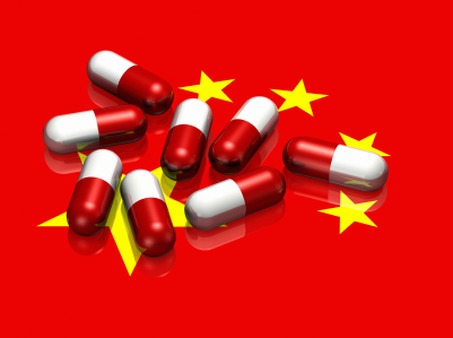Ongoing Healthcare Reform in China
LEXOLOGY2017-11-27 17:29:49

China’s ongoing healthcare reform has led to changes in the country’s pharmaceutical market. Examples are manifold and range from compliance campaigns with unannounced inspections of pharmaceutical manufacturing and distribution operations, launch of the two-invoice system in order to tackle pricing issues, implementation of higher thresholds for grant of marketing authorisations by the China Food and Drug Administration ("CFDA") to ease the manufacturing overcapacity.
In May 2017, the CFDA issued four consultation draft policy documents which set out key reforms to the regulatory process for drugs and medical devices (Circular 52 to 55 of 2017). In particular, Circular 55 entitled Relevant Policies on Protecting Innovator Interests to Encourage Drug and Medical Device Innovation (Draft for Public Comment) sets out the specific details on the much anticipated patent linkage system, data exclusivity and the establishment of the Orange Book type catalogue for marketed drugs in China. Further on 8 October, State Council's issued the Opinions on Deepening the Reform of the Review and Approval System to Encourage Innovation in Drugs and Medical Devices which endorsed the proposed policy in Circular 55, in particular:
Establishing a catalogue for marketed drug - Newly approved drugs or generic drugs that have passed the Consistency Evaluation of the Quality and Efficacy shall be recorded INTO the Catalogue for Marketed Drugs in China, listing the key information of the drug, such as the drug name, drug type, API, dosage form, specifications, market approval holder, patent rights and trial data exclusivity period, etc.
Exploring the establishment of drug patent linkage system - To explore the establishment of linkage system between drug review and approval process with drug patents, to protect the legitimate interest of patent holders, lower the risk of generic drug patent infringement and encourage the development of generic drugs. When an applicant submits a drug registration application, it shall stipulate the relevant patents, ownership status, and the applicant is required to notify the relevant drug patent holder within a specified period.
Enhancing and implementing a drug trial data protection system – Upon the filing of a drug registration application, the applicant is required to simultaneously submit an application for trial data protection. Data exclusivity on undisclosed trial data and other data will be extended to innovative/improved orphan drugs and paediatric drugs, innovative biological products, and for first domestic generic drugs which had successfully challenged the patent. The period of data protection varies from 1.5 years to 10 years calculated from the date of market authorisation. During the data protection term, no market authorisation shall be granted on an application for the same drug, except where the data is acquired by the applicant or with the consent of the originator of the data.
The CFDA has also introduced certain changes to the imported drug registration procedure to reduce the registration period for imported drug and encourage the introduction of innovative drugs by multi-national pharmaceutical companies at an earlier stage. The changes made to the registration procedure of imported drugs are set out in the Decision on Adjustment of Imported Drug Registration Management aiming ("Decision") issued by the CFDA on 10 October 2017.
On 23 October 2017, CFDA published the Draft Amendment of the Drug Administration Law ("Draft DAL") and Draft Administrative Measures for Drug Registration ("Draft DRR") for public consultation:
The Draft DAL together with the corresponding Draft DRR indicates the government's priority for the reform of the new drugs authorization regime especially for original drugs in order to enhance innovation in the life science space. In the past, the license for the new drugs had to be attached to the manufacturing license. Most of the Chinese manufacturers were reluctant to invest in R&D for new drugs, preferring to rely on the production of generic drugs. Also, launching a new drug in China is not attractive for foreign pharmaceutical companies because the authorisation procedures were 5-7 years longer than in Europe or US. Therefore, only 30% of the originator drugs overseas in demand have been launched in China. This situation has led to a shortage of fully authorised innovative drugs in China.
To satisfy the urgent demand on new drugs, the innovation of new drugs shall be encouraged and accelerated upon following measures:
Marketing Authorisation Holder ("MAH") schemes. The MAH schemes can facilitate the drug innovation and reduce the manufacturing overcapacity. The scheme basically permits the separation of the manufacturing license holder from the marketing authorisation holder. In the future, R&D institutions with limited manufacturing investment capacity can also hold the drug license. The MAH can manufacture the drugs if it is holding the manufacturing license, or may entrust another entity for manufacturing. With regard to the legal responsibilities to the quality of the drug, the MAH shall be fully responsible for pre-clinical trial research, clinical trial, manufacturing operations and side effects. Therefore, the responsible party for pricing, labelling, advertising, bribery for and damages caused by the drugs will be changed from the manufacturer to the MAH. MAH from overseas shall appoint a legal entity registered in China to undertake above responsibilities and bear the joint liability on quality assurance, risk control and compensation.
Clinical trials Another measure to streamline governmental application procedures is the shortening of clinical trials applications which shall now be processed within 60 days. Furthermore, the approval shall be deemed granted if no notice is issued within the 60 days period. Clinical trials may be carried out by third party institutions with the required capabilities. Such institution is subject to a recordal procedure with CFDA instead of the previously required approval.
GMP and GSP The certification for every five years of Good Manufacturing Practise ("GMP") and Good Supply Practise ("GSP") require heavy investment by manufacturers and/or distributors. The requirement for GMP and GSP had been overlapping. To simplify the administrative procedures and shift the monitoring focus from one-time prior approval to continuous post administration on product quality, the mandatory certification of GMP and GSP is removed in Article 67 of the Draft DAL but the penalties in relation to drug safety have been enhanced. Even GMP and GSP certifications have been cancelled in practise, they will still remain as the industry minimum standard to follow voluntarily for quality assurance.






